Deep Gluteal Pain Syndrome: Cause, Symptoms, Diagnosis, Treatment
Deep gluteal syndrome is a condition in which you have pain and numbness in your buttocks (gluteal) that can sometimes radiates at the back of your leg mainly due to compression of the sciatic nerve.
Several body parts can leads to sciatic nerve compression within the gluteal space. Doctors will physically examine you the specific site where the sciatic nerve is compressed though various examination test, as well as several radiological test such as MRI/CT Scan that help to diagnosis of the condition.
In this article we discuss the deep gluteal syndrome in order to understand the posterior hip anatomy, nerve course, clinical sign & symptoms, diagnostic procedure, differential diagnosis and common treatment protocol.
Table of Contents
What is Deep gluteal syndrome?
When sciatic nerve is compressed in the deep gluteal region (with the the presence of pain in the buttock) mainly due to various structures of the body in gluteal space such as the piriformis muscle, fibrous bands containing blood vessels, gluteal muscles, hamstring muscles tightness, 2- the gemelli-obturator internus muscles, and other vascular abnormalities and space-occupying conditions.
To understand which part or body structures compressed the sciatica nerve and causing the pain and related symptoms which are located in the deep gluteal region that why it’s called ‘deep gluteal syndrome’ instead of ‘piriformis syndrome’. In Piriformis syndrome where sciatic nerve pain occurs mainly due to piriformis muscles. It is a extrapelvic sciatic nerve compression and non-discogenic gluteal pain.
There are few unique way to find, where the sciatic nerve is compressed. Doctor’s will take your history of pain and also perfrom Physical examination test that help to find the cause of sciatica pain. Proper examination and assessment methods helps to differential diagnosis of the deep gluteal pain syndrome.
Defination of Deep Gluteal Syndrome:
It is a pain with tingling numbness in the gluteal region at the back of the thigh thigh with radiating pain along the sciatic nerve area with non-discogenic pain and sciatic nerve compression from extrapelvic region within the deep gluteal space.
The most common cause of sciatic nerve compression are piriformis muscle (67.8%), sciatic foramen (6%), ischial tunnel (4.7%), However it can be of different conditions with similar and overlapping symptoms.
Symptoms of Deep Gluteal Syndrome:
- Gluteal pain (Buttock) nearby retro greater trochanter pain
- Tingling numbness at the back of the thigh and leg along the sciatic nerve area
- Pain present mostly one side, however it can be seen both sides
- Pain increased with prolonged sitting position like office working (longer than 20-30 minutes) or long driving
- Pain during stepping at the end
- Limping gait when Patients walking
- Neurological motor-sensory changes in severe cases
- Severe night pain with difficulty in sleep
Related Anatomy:
The deep gluteal space has a complex anatomy. Understanding of its boundaries and structures helps in improving the therapist examination skills as well as the diagnosis of patients symptoms and treatment.
The deep gluteal space boundaries are:
- Posteriorly: the gluteus maximus muscle
- Anteriorly: The Hip Joint capsule, the posterior acetabular column, and proximal femur
- Laterally: the gluteal tuberositywith lateral lip of linea aspera
- Medially: sacrotuberous ligament and falciform fascia
- Superiorly: the sciatic notch – inferior margin
- Inferiorly: the initial origin of the hamstrings muscle at ischial tuberosity
The deep six muscles are important, located under the Glutes Maximus and Medius. The deep six muscles are Piriformis, the Superior Gemelli, Obturator Internus, Obturator Externus, Inferior Gemelli and Quadratus Femoris. The Piriformis and the Quadratus Femoris muscle are the easy to palpate.
The Sciatic Nerve located over the Obturator and Gemelli complex it then passes laterally to the Ischial Tuberosity where the Biceps Femoris attaches. It is attached on the medial side, by the Ischial Tuberosity and on the lateral side, by the lesser trochanter of the femur.
The Sciatic nerve compression mostly compressed under the Piriformis muscle.
The nerve dynamics is an important part to understand the compression pathophysiology. This nerve move across the posterior border of the greater trochanter when the hip joint moves such as flexion, abduction and external rotation,
When hip fully flexed, abducted and externally rotated, the nerve is in contact into the semimembranosus origin and the posterior edge of the greater trochanter while the knee joint is flexed, the sciatic nerve pass posterolateral and when the knee is extended the nerve pass deep into the tunnel.
Pudendal Nerve Entrapment:
The Sacrotuberous Ligament originates from the Ischial Tuberosity and inserts onto the sacrum and the coccyx while the Sacrospinous Ligament located at 90 degrees to it, deep to the Sacrotuberous Ligament and attaches onto the Ischial Spine. The thickness of these ligaments could result in compression of the Pudendal Nerve, also called Alcock Canal Syndrome or Cyclist Syndrome(Pudendal Nerve compression in Alcock’s canal.).
Most common symptoms are deep gluteal pain with sexual dysfunction, rectal pain, with Bladder-bowel incontinence. Pudendal Nerve compression can highly affect the quality of life.
It is mostly occurs mainly due to prolonged sitting position mainly on the bike, extreme cycling or fall on buttok region. This symptoms may increase with sitting position, while standing and supine position will relieve the symptoms.
Ischiofemoral Impingement:
Hip joint related surgeries like total hip replacement, out of them few patients have symptoms like pain at the back of the leg and deep gluteal pain, mainly seen with hip extension and adduction movement. Ischiofemoral Impingement pain is a rare cause of hip pain mostly seen in patients with total hip replacement and proximal femoral osteotomy related surgeries.
The Ischial Tuberosity and the lesser trochanter makes the the Ischiofemoral space is a very small space. Quadratus Femoris muscle tightness or inflammation such as bursitis can cause reducing the space and compression on the sciatic nerve in that region.
Symptoms of Ischiofemoral Impingement:
- Deep gluteal pain with radiating down to the leg upto knee.
- Short strides steps during running mainly due to reducing the space at the Ischiofemoral space with hip extension and adduction movement which again increased with the stride length.
- Back strain mainly due to reduced Hip extension movement.
- Symptoms are increase with terminal hip extension and adduction movement
- Pain, Tenderness at the ischium during passive Hip extension movement
- Snapping, clicking or locking movement of the hip joint during long-stride walking
During Physical examination, the combination of passive extension, adducting and external rotation of the hip is used to see the symptoms of Ischiofemoral Impingement.
The walking with large steps (long stride walking test) has a sensitivity of 92% and a specificity of 82%.
Proximal Hamstring tendinopathy
When you have pain in in the back of your upper thigh or buttock region (gluteal) then it is possible that you have proximal hamstring tendinopathy. The origin of the Hamstring muscle is on the Ischial Tuberosity, near to the Sciatic Nerve. It is most commonly seen people with marathon runners or suddenly jerky stop and run like activity such as football and hockey sports.
Sign and Symptoms:
- Deep gluteal pain in the area of the ischial tuberosity.
- Pain increases with long sitting, with long driving, picking up boxes and uphill running. This occurs mainly due to shear forces between the hamstring attachment at the ischial tuberosity which increased in hip flexion.
- Straight leg raise sign is positive.
- Positive slump test and neurodynamic test which shows pressure on the Sciatic Nerve However it doesn’t diagnose the proximal Hamstrings Tendinopathy
- Pain and symptoms are increase with load assessment tests
Diagnosis of the Deep Gluteal Pain Syndrome:
Doctors take your short history related to your pain, also do Physical examination test to rule out what are the cause of deep gluteal pain.
Physical Examination
Lumbar spine related condition should be ruled out first. Physical examination like pain and symptoms palpation, pelvic girdle and Sacroiliac Joint tests.
This tests are the March/Gillet test and the active straight leg raise test.
Patients with sciatic nerve compression are often seen with a history of previous injury, pain with long sitting, radiating pain alon the course of leg pain and paresthesia.
A positive March test or active straight leg raise(SLR) test, indicate sciatica nerve compression and failed load transfer, However not differentiates the diagnosis of the condition.
To differentiate the hip Osteoarthritis, the total arc of motion and FADIR tests are helpful. A negative FADIR can rule out intra-articular joint pathology, eg. labral damage or osteoarthritis of the hip.
A positive FABER test increases Sciatic Nerve symptoms where the nerve passes throgh the posterior border of the greater trochanter in that position. If the pain felt on the greater trochanter area it could be due to Gluteal tendinopathy. If the patient felt the pain deep in the gluteal area it is more likely to be compression of the sciatic nerve due to the Piriformis muscle or the deep six muscles.
In Deep Gluteal Pain Syndrome, symptoms like muscle weakness, reduce sensation with altered nerve conduction tests, changes in reflexes are seen in severe case. so it is important to differentiate from the lumbar spine related condition from the gluteal pain.
The seated piriformis stretch test with combination of the piriformis active test has shown a sensitivity of 91% and specificity of 80% for the endoscopic finding of sciatic nerve compression.
Examiner’s palpation skills can be useful in differentiating the diagnosis- originate of pain. Examiner using the ischial tuberosity to reproduce the patient’s pain with palpation to understand the probable cause of pain and symptoms.
Imaging study:
- X-ray is helpful to rule-out the Hip and Lumbar spine related pathology.
- MRI- Magnetic Resonance imaging
- CT Scan
- EMG/ NCV test
Differential Diagnosis:
- Pudendal nerve entrapment
- Ischiofemoral Impingement
- Gluteal Tendinopathy
- Obturator Tendinopathy
- Gemelli Tendinopathy
- Sacroiliac Joint pathology
- Piriformis syndrome
- Obturator internus syndrome
- Non-discogenic Sciatic nerve entrapment
- Ischial tunnel syndrome
Treatment of Deep Gluteal Pain Syndrome:
It is mostly relieved with Non-surgical medical treatment with Physiotherapy treatment and exercise. The primary goal of treatment are:
- Symptomatic pain relieving medicine mainly NSAIDs are prescribed by the doctors such as Diclofenac or aceclofenac.
- Differentiate the cause of pain.
- Intra-articular injection and extra-articular injections with image guide (local anesthetic and steroids are used)
- Avoid painful activity and ergonomics care.
Most common advise that are really helpful:
- Weight management if you have obese
- Lifestyle modification
- Sleep hygiene
- Avoid Risk factors such as smoking, Alcohol, Drugs
Physiotherapy treatment and Exercise:
Physiotherapy treatment goal is to relieve pain and symptoms. To relieve pain, and other symptoms, Electrotherapy modalities such as Transcutaneous electrical nerve stimulation (TENS), Interferential therapy (IFT), Ultrasound therapy are used.
Myofascial release (MFR), manual therapy in combination with the appropriate exercise-rehabilitation program helpful to recover from Deep Gluteal Pain Syndrome.
Physiotherapy exercise:
Initially easy to perform simple exercise program according to assessment of the patient with avoiding of painful activity and exercise.
As improvement are seen, gradually add stretching exercise of calf, Hamstring, gluteal, Piriformis muscle and quadriceps muscle are beneficial.
Combination of exercises with neurodynamic gliding techniques, such as a Sciatic Nerve slider exercise.
Gluteal muscles strengthening exercise such as bird-dog exercise, split squats, and gradual loading exercises program.

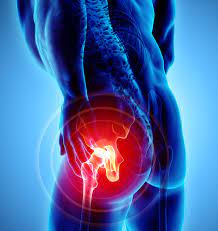
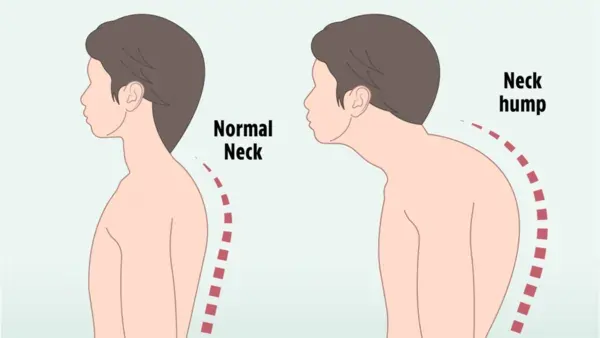

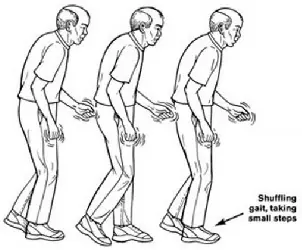
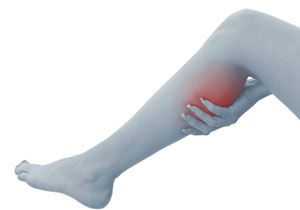

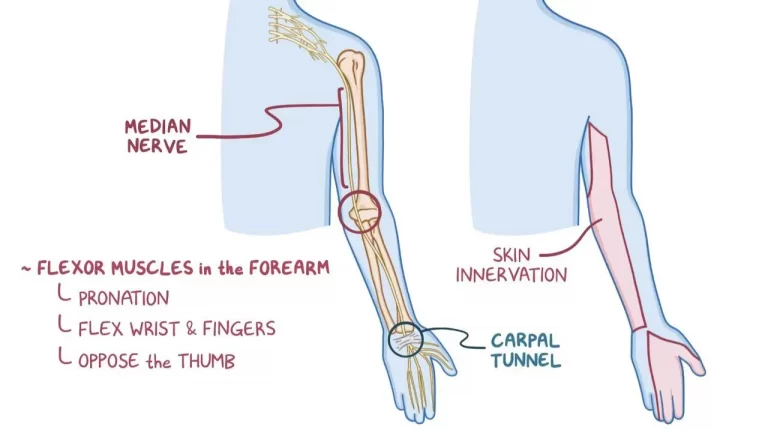
Thank You so much for this information.Finally I have an answer.With a multiple of symptoms as described here I could not focus on what the exact cause of my condition.This article is so focused and pinpoint I could swear it was written about me.I wish you were in the USA.